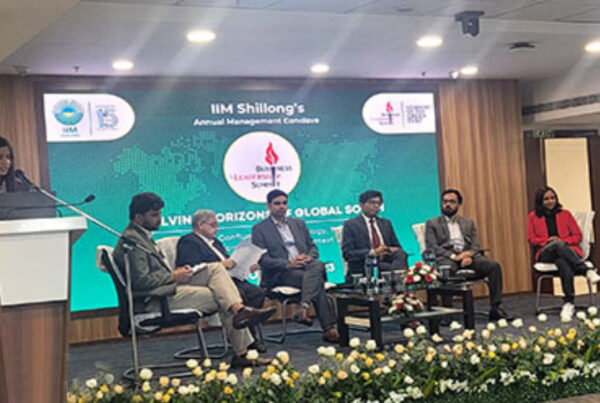Augmented Reality (AR) has been around for quite some years now, but its adoption in the manufacturing sector has been rather slow. Given its immense potential, the integration of AR in manufacturing operations will significantly improve the efficiency and effectiveness of processes. Two of its major uses, among a host of others, are:
(i) application in automation, maintenance, complex assembly lines, and quality assurance; and (ii) creation of visual designs and simulations, wherein elimination of prototypes will significantly reduce the cost of production, besides facilitating detailed visualization.
As machines become smarter with the integration of industrial IoT, paving the way for the digitalization of manufacturing systems, plants are transforming into seamless, smart factories. Manufacturing is increasingly becoming data-driven following the implementation of Industry 4.0 technologies (AI, ML, and IoT)across industries. The use of AR will give a fillip to the ongoing digital transformation.
According to the World Economic Forum, digital transformation underIndustry 4.0 Revolution could unlock US$100trillion in value over the next 10 years across industries globally. Industry 4.0 technologies have given a boost to smart factories that represent a switch from ‘automation to autonomy’. As this takes effect, connectivity at the shop floor will improve due to the application of advanced robotics; adaptive automation; and VR&ARfunctionalities. Consequently, efficiency and productivity of the plant are expected to increase multifold. source
AR, coupled withIoT, can help in addressing the shortage of skilled labor plaguing the manufacturing industry. These advanced technologies can take training and development to the next level by improving interaction and engagement. Additionally, real-time collection of data can help in identifying and rectifying mistakes effectively and quickly. Moreover, using AR to remotely access and inspect machines is both time- and money-saving, especially while correcting a malfunction in equipment. Driven by the benefits that are critical to any business, companies are increasingly considering integrating AR in manufacturing operations as a way to generate returns on investments and enhance efficiency over the long term.
According to CXOs of various companies, using AR provides several benefits to manufacturers, such as higher output at lower cost, improvement in factory downtime, safety of workers, and reduction in product-related errors. AR also facilitates virtual testing of manufactured products, thereby enabling an organization to cut on both time and expenses. In a nutshell, AR can streamline entire manufacturing and supply chain processes, improve resource utilization, and increase efficiency by facilitating troubleshooting in real-time.
Asia-Pacific is expected to be the most lucrative region in terms of opportunities for growth in AR in manufacturing, given the wave of industrialization in emerging economies such as India, China, Vietnam, and the Philippines. Heavy investment in latest technologies in electronics and healthcare is estimated to boost the use of AR in manufacturing. In the light of this, the demand for AR in the manufacturing sector is expected to grow by double digits Y-o-Y over the next 5–7 years.
For more information on our research services and consumer insights, please connect with Somil Jain, Assistant Manager at Avalon Global Research.




